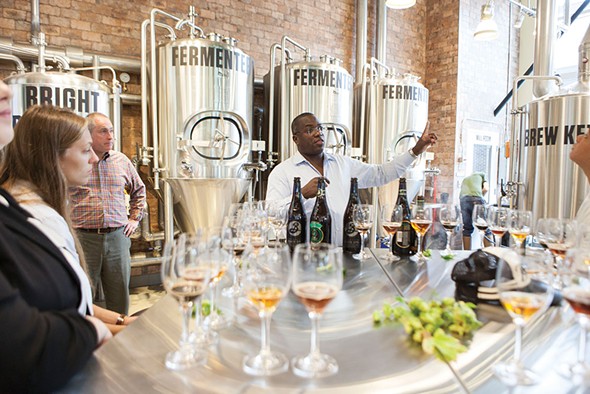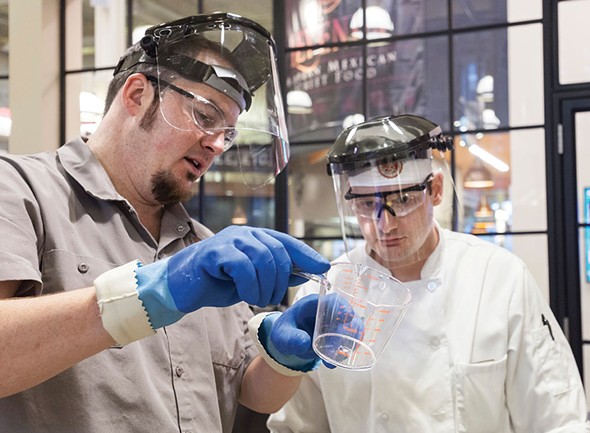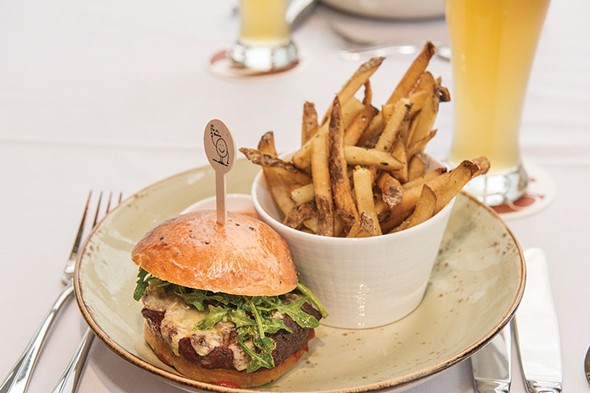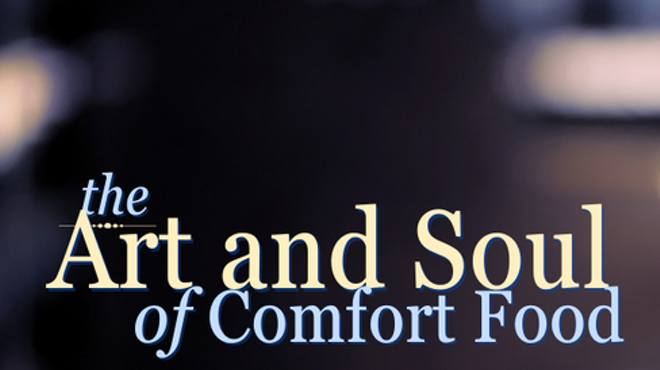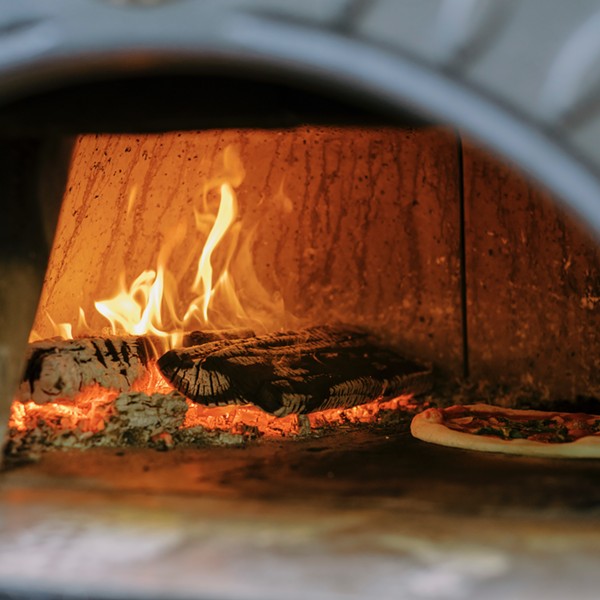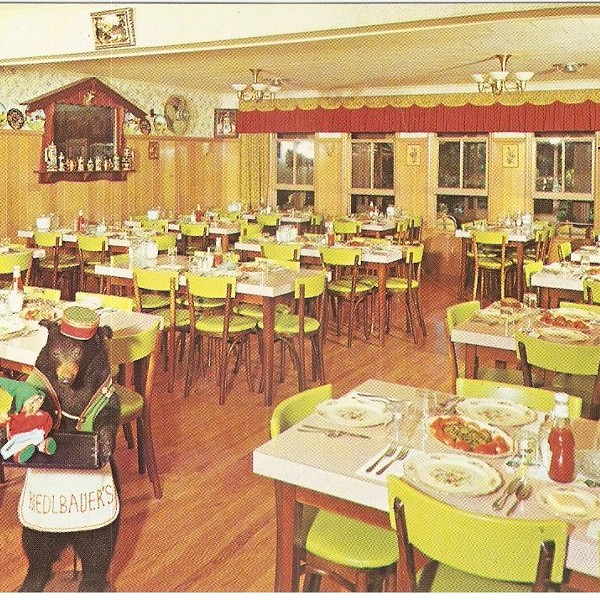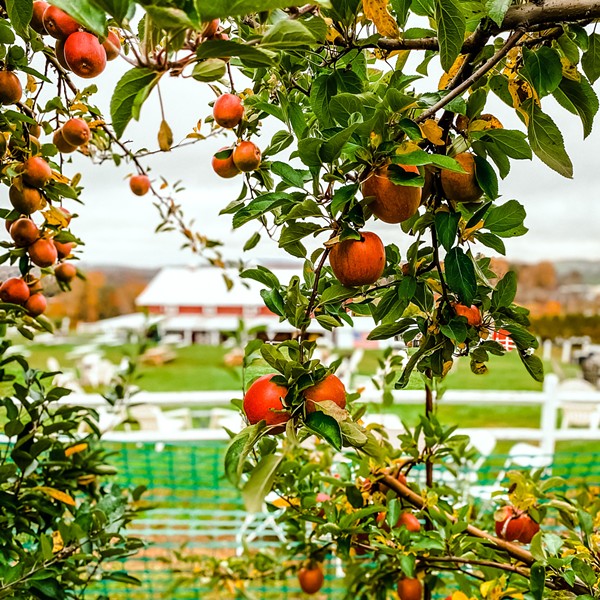It's still early in the day and already a handful of college students crowd around a table with over a dozen beers. The musty smell of hops and yeast pervades the room as the students listen to their professor talk about beer and beer drinking. His lecture, however, is a lot different from the castigating reprimand typically handed out to undergraduates caught quaffing beer. Dressed in in chef's coats and checkered pants, these are students at the Culinary Institute of America in Hyde Park, and their professor, Douglass Miller, is teaching them how to make this ancient beverage that's solidifying its place alongside wine on restaurant menus.
Tastings like these are part of the curriculum of the CIA's new course, called "The Art and Science of Brewing," first offered last fall in the campus's brand new brewery. During the semester-long elective, students learn the ins-and-outs of brewing, from grist to growler, along with marketing and even how to choose a name. (Of the roughly 29,000 different beers in the US, simply finding a name that hasn't been trademarked is a challenge in itself). The course is structured similarly to other CIA classes with lab components, except the "lab" is the seven-barrel brewery, overseen by brewmaster Hutch Kugeman. The construction of the facility was made possible through sponsorship from Brooklyn Brewery, which helped design the layout, purchase equipment, and will continue to offer its support through a multiyear agreement with the school.
Beer on the Rise
For Waldy Malouf, the brewery couldn't have come at a better time. Malouf is the senior director of food and beverage operations for all three CIA campuses, and he's noted the momentous shift beer has undergone in the restaurant industry. "What you're seeing in the beer community is following what happened with wine 20 to 25 years ago," Malouf says. "It's being paired with food in a traditional sense." A great beer program is now not only common but necessary in the industry according to Malouf, and it follows that a culinary education should reflect the changing landscape. The brewery, he says, will help "the CIA stay relevant, to be better for the education of our students," and allow its restaurants to carry "the best possible beer" that "can't be any more local." Malouf adds: "It's also just fun."
The incorporation of a brewing program into one America's most prestigious culinary schools marks a milestone for craft beer as well. This is no surprise, however, for Garrett Oliver, brewmaster at Brooklyn Brewery. "Beer is the ultimate culinary drink," he said at a kickoff event for the brewery in December. While wine has only one ingredient, beer can be brewed with everything from apricots to oysters, allowing it to express a diverse range of flavors. "You can pair it with anything," Oliver says, and even the most rarified pockets of the culinary world are coming around to his way of thinking. In September, Oliver presided over a seven-course tasting menu at Thomas Keller's Per Se. 11 Madison Park offers a dozens-strong beer selection, and at Gramercy Tavern you can even order from their selection of vintage beers aging in the cellar.
Since 2011, the number of New York state wineries grew by 50 percent, while breweries expanded by a staggering 400 percent. While the state is quickly becoming one of the epicenters of the craft beer movement, its advent has shaken things up throughout the country. Surprisingly, craft beer's meteoric rise has actually taken place during a comparative slump in the industry. From its heyday in the 1970s, beer consumption over wine or spirits has actually decreased or remained flat, growing only half a percent in 2014. The crucial factor is that of the people drinking beer, more and more are choosing craft over larger "macro" breweries: market-share for craft beer has more than doubled in the past 5 years, from 5 percent to 11 percent.
The US now has more breweries than ever its history, exceeding even pre-Prohibition levels. Garret Oliver argues that rather than being a novel trend, "beer has now returned to normal." He's citing, of course, the vast variety of beer and breweries in operation before Prohibition, when each neighborhood in a city might have its own brewery. Miller says that during the 1870s, there were five to six breweries in Poughkeepsie alone. While beer culture in our country is often portrayed as reintroduced from the old world, its unstoppable rise has taken on a life and character of its own. When you can walk into a recently opened, small-batch brewery in London and find yourself in front of a West-Coast style "American Pale Ale," it's clear that US beer culture is distinctive, healthy, and thriving. With craft beer becoming a nigh-on global phenomenon, the offerings at the CIA have got a lot to live up to.
The good news is that the beers great. At the kickoff event, three different beers showcasing a range of styles were served. The first two will be offered year-round: the Cleaver IPA, and the Mise-en-Place Witbier. The IPA is hearty and robust with a substantial but sharper mouthfeel and plenty of hoppy flavor, but pulls just short of being bitter, finishing clean and crisp. Brooklyn's influence is felt here; it was reminiscent of its own East India Pale Ale. Mise-En-Place Witbier, a delicate wheat beer, is brewed with orange peel and coriander. Like other good ingredient-added beers, the extra flavorings helped shape the flavor rather than dominate it, providing a touch of citrus in the mid-palate that played beautifully off of the chalky texture common for the style. The one they served was a touch undercarbonated—some extra bubbles would have provided the clean, sharp finish that sets exceptional beers of this style apart—but was pulled directly from the brite tank where carbonation occurs, and was sure to undergo further development. Nonetheless it was exciting to try a beer that was technically "less than zero" days old, as Malouf put it.
The standout, however, was the Cast Iron Stout, which was developed by this semester's students under brewmaster Hutch Kugeman. The texture was spot-on, with deep notes of chocolate and toasted malt, but the addition of German Magnum and Perle hops provided the perfect counterbalance to keep it from getting too heavy.
Although the CIA does not have a license to distribute, the beer is available to visitors with a growler and will be served in each of the CIA's campus restaurants. American Bounty places a special emphasis on the brewery's products, and is featuring every available beer at the James Beard Tavern, opening early next February. Set apart from the restaurant, the tavern is designed to be a more informal dining experience, with a separate kitchen offering a first-for-the-CIA bar menu for small plates and snacks. Don't equate informal with blasé, however, as sample offerings included wood-roasted oysters with verjus and shallots with a pink peppercorn mignonette. The oysters were sumptuous and had an almost cream-like texture, accented beautifully by the acidic mignonette. These were accompanied by grilled shrimp coated in Aleppo chili and served with a charred tomatillos and were, in a word, phenomenal. Almost flash-roasted in an extremely hot oven, were served with much of the shell on, which was actually encouraged to be eaten. Far from the unpalatable texture one would expect, the shell lent a satisfyingly crispy crunch, almost as if it was fried; it must to be tried to be believed. (The shrimp were sourced from Eco Shrimp Garden, an indoor shrimp farm in Newburgh. The school puts an emphasis on buying local.) Waldy Malouf describes the concept for the tavern as a casual yet elegant place to "have a great burger and fresh beer," and the burger was superb as well, cooked perfectly to temperature and served with a New York cheddar, hand-cut fries, and house-made ketchup.
Die-hard purists might argue over whether beer belongs in the same lofty culinary halls as wine or spirits, but that ship has sailed. Craft beer is here to stay. The CIA's campus brewery is a prescient acknowledgment by the school, and much as beer has found its way onto the culinary landscape, it's similarly found its way onto one of the landscape's vaunted institutions. Needless to say, the course "The Art and Science of Brewing" is popular on campus, but not just for the stereotypical inclination of undergraduates toward beer-drinking. These students know that craft beer has entered the main stage, and a culinary education would be incomplete without it.







